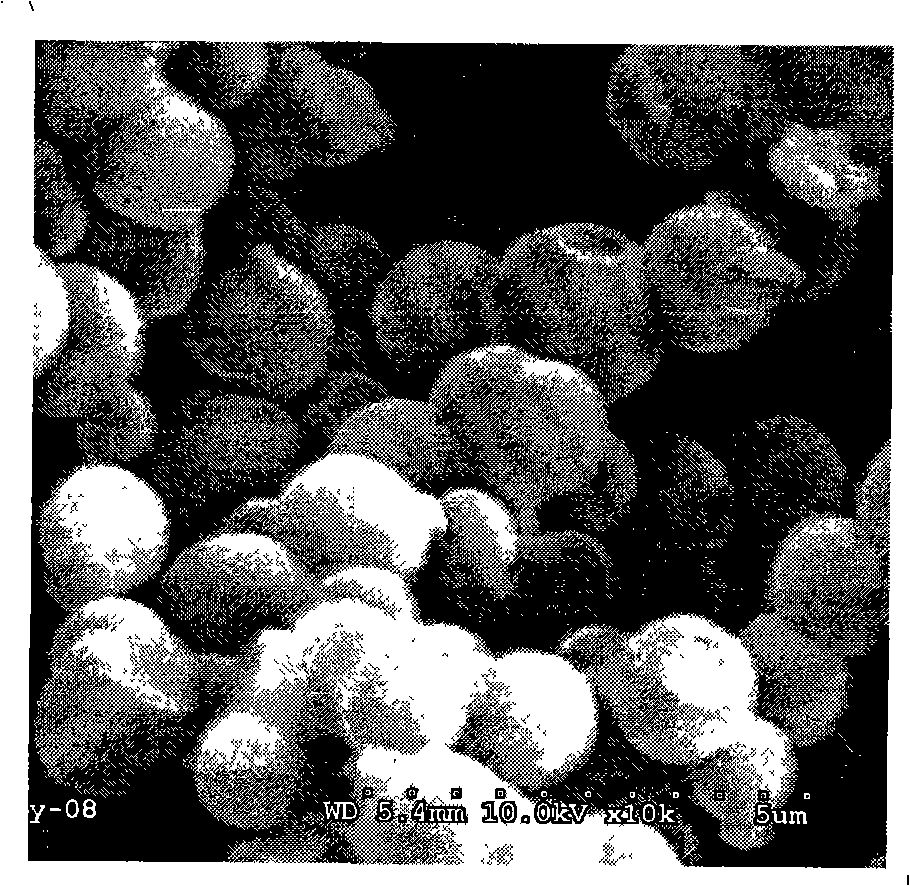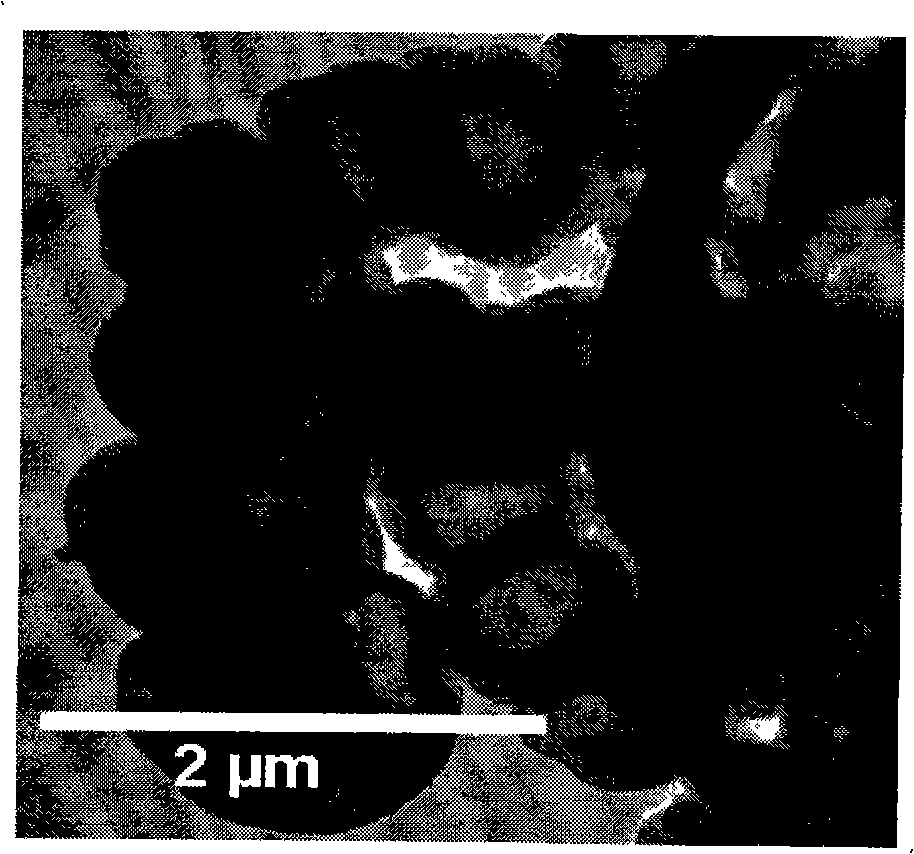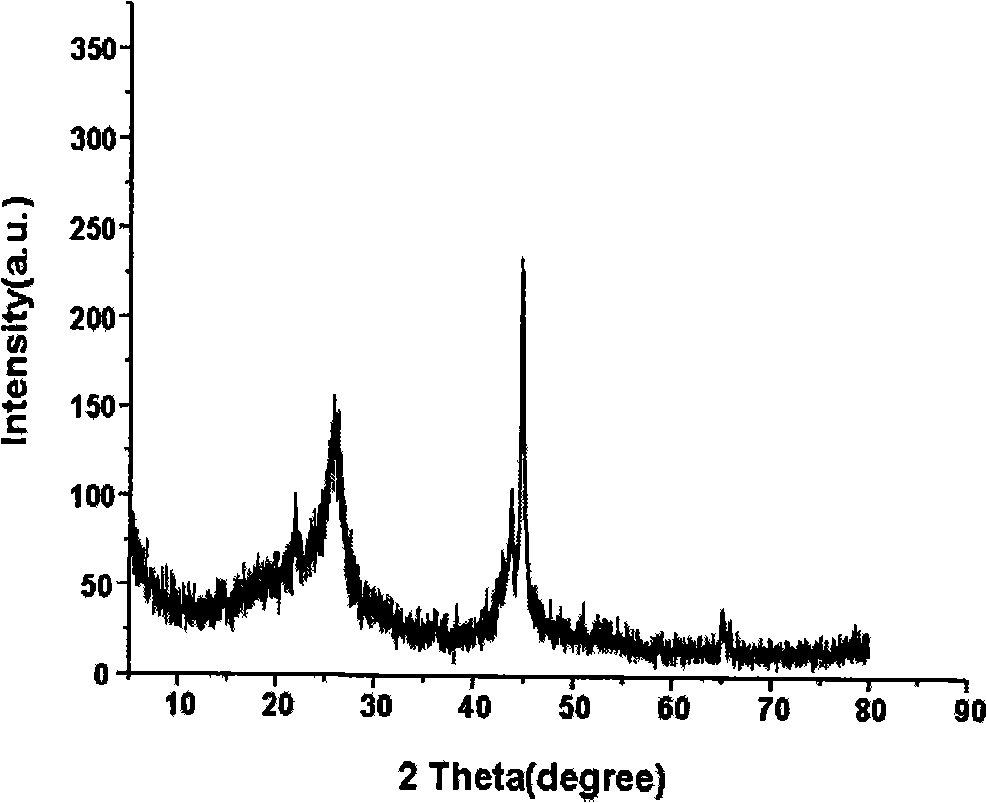One-step synthesis method for hollow carbon case
A hollow and carbonization technology, which is applied in the field of one-step synthesis of hollow carbon shells, can solve the problems of complex post-processing procedures, uneven particle size, and many surface defects, and achieve uniform and controllable particle size, high technical added value, and stable performance. Effect
- Summary
- Abstract
- Description
- Claims
- Application Information
AI Technical Summary
Problems solved by technology
Method used
Image
Examples
Embodiment 1
[0023] Weigh 1.40g of dihydroxybenzoic acid and 0.48g of lysine into a 500ml round bottom flask, add 250ml of absolute ethanol, stir, and after the lysine and dihydroxybenzoic acid are completely dissolved, add 1.48g of 37% formaldehyde solution , stirred and refluxed in a water bath at 80°C for three days. After the reaction is completed, the reactant is filtered, washed with ethanol or water, and the collected product is dried at 50°C. The scanning electron micrographs of the obtained polymer micro-nanospheres are as follows: figure 1 shown. Put a part of the dried polymer into a carbonization furnace. The carbonization procedure is as follows: from room temperature to 150°C at a rate of 5°C / min, and keep the temperature constant for 30 minutes; After 120 minutes, a black powdery polymer, that is, a hollow sphere product, was obtained. The transmission electron micrograph of the product is shown in figure 2 As shown, it shows that the obtained product is a hollow carbon...
Embodiment 2
[0025] The operation method is the same as in Example 1, except that the solvent is replaced with 250ml methanol. The obtained carbonized product has an average diameter of 2.5 μm and a BET specific surface area of 584m 2 / g of uniformly distributed hollow carbon spheres.
Embodiment 3
[0027] The operating method is the same as in Example 1, except that the solvent is replaced with 250ml of isopropanol. The obtained carbonized product has an average diameter of 1 μm and a specific surface area of 322m 2 / g of uniformly distributed hollow carbon spheres.
PUM
| Property | Measurement | Unit |
|---|---|---|
| diameter | aaaaa | aaaaa |
| specific surface area | aaaaa | aaaaa |
| diameter | aaaaa | aaaaa |
Abstract
Description
Claims
Application Information
 Login to View More
Login to View More - R&D Engineer
- R&D Manager
- IP Professional
- Industry Leading Data Capabilities
- Powerful AI technology
- Patent DNA Extraction
Browse by: Latest US Patents, China's latest patents, Technical Efficacy Thesaurus, Application Domain, Technology Topic, Popular Technical Reports.
© 2024 PatSnap. All rights reserved.Legal|Privacy policy|Modern Slavery Act Transparency Statement|Sitemap|About US| Contact US: help@patsnap.com










